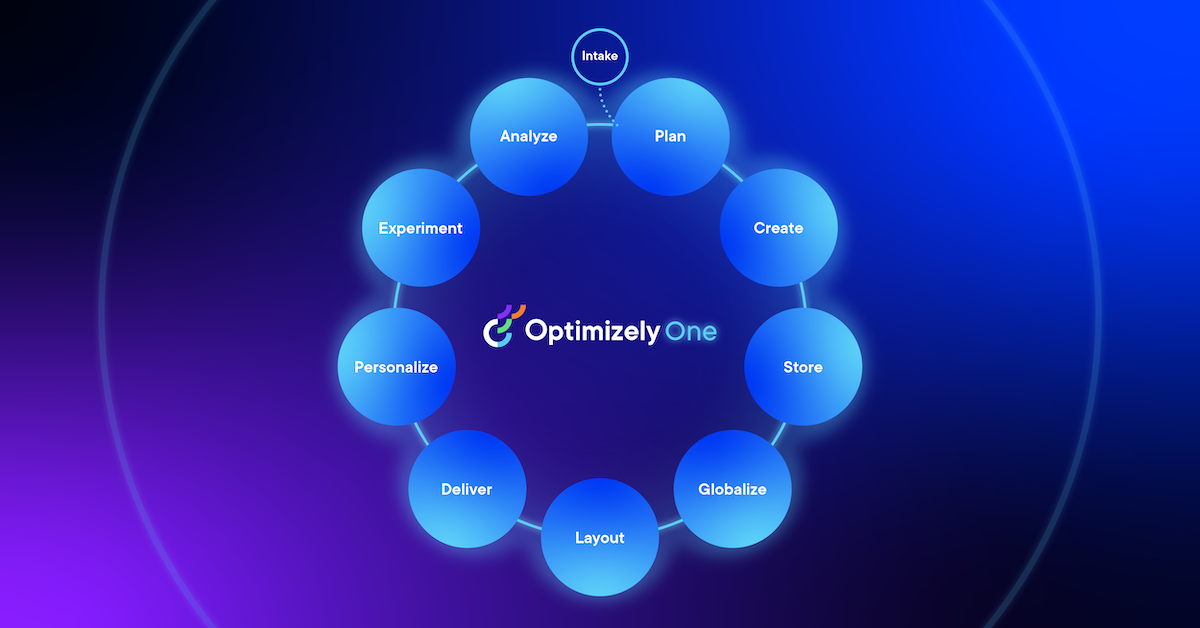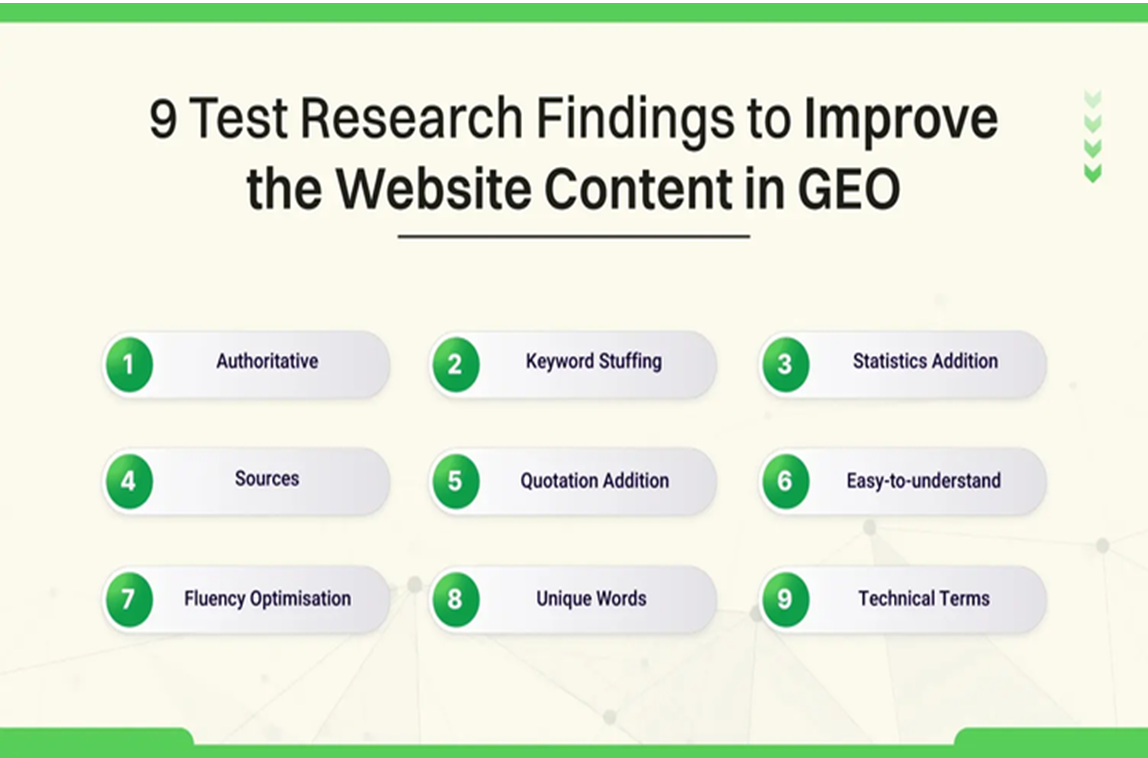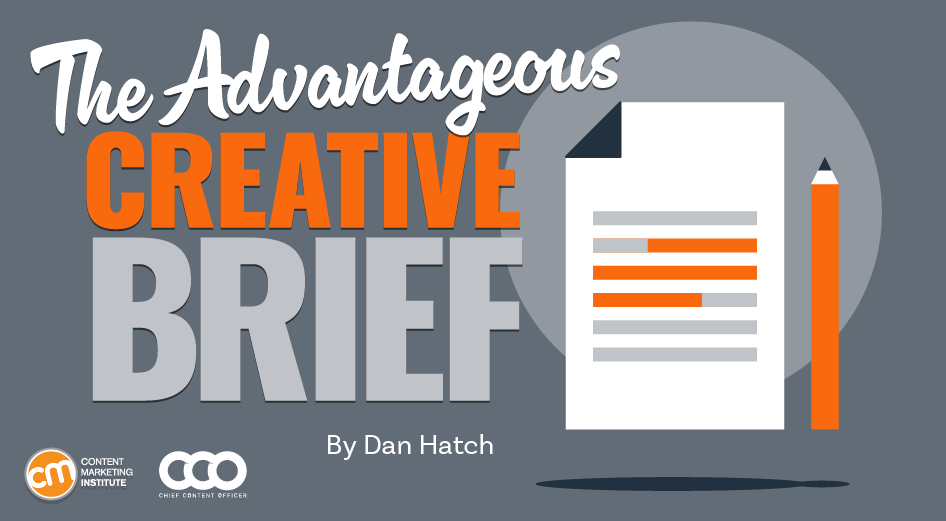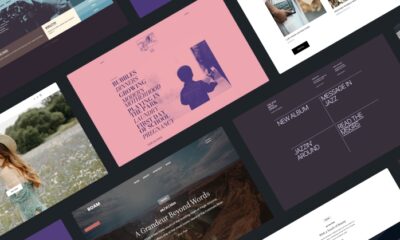MARKETING
The marketing lifecycle: An overview

Remember when digital marketing was simple? Create content, throw it over the wall, hope for the best.
Note that we said “simple,” not effective.
To be effective is more complicated, and this keeps accelerating. There are so many options, so many channels, and so many audiences, that effective digital marketing requires a term to which people often react strongly—
Process.
Very few people inherently like the idea of “process.” It brings forth visions of rigidity and inertia.
But there simply has to be a framework in which to produce and publish effective marketing assets. Without this, you have nothing but chaos from which productive work gets done accidentally, at best.
How did it get this way for the enterprise? How did things become so interconnected?
- Marketing isn’t a point in time, it’s an activity stream. It’s a line of dominoes you need to knock over, roughly in order. Lots of organizations do well at some, but fail on others, and thus break the chain of what could be an effective process.
- Marketing activities overlap. It’d be great if we could do one thing at a time, but the marketing pipeline is never empty. Campaigns target different audiences at the same time, and new campaigns are being prepared as existing campaigns are closing.
- Marketing involves a lot of actors at vastly different levels. There’s your content team, of course, reviewers, external agencies and contractors, designers, developers, and—of course—stakeholders and executives. Each group has different needs for collaboration, input, and reporting.
Some of the best business advice boils down to this: “Always understand the big picture.” You might be asked to do one specific thing in a process, but make sure you understand the context of that specific thing—where does it fit in the larger framework? Where does it get input from? How are its outputs used?
In this article, we’re going to zoom out for an overhead view of how Optimizely One helps you juggle the complete marketing lifecycle, from start to finish, without letting anything drop.
1. Intake
Ideas are born everywhere—maybe with you, maybe with your staff, maybe with someone who has no connection with marketing at all, and maybe from an external source, like an ad agency or PR firm. Leading organizations have found a way to widen the top end of their pipeline—the start of their content marketing funnel—and take in more ideas from more sources.
Good ideas combine. Someone has one half of an idea, and someone else has the other half. The goal of effective collaboration is to get those two pieces together. One plus one can sometimes equal three, and more ideas mean better ideas overall. Creativity is about getting more puzzle pieces on the table so you can figure out which ones fit your strategy.
How do you manage the flow of ideas? How do you make sure good ideas don’t get dropped, but rather become great content? The only way to publish great content is to get ideas into the top end of the pipe.
Optimizely One can streamline and accelerate your content intake using templated intake forms mapped to intelligent routing rules and shared queues. Everyone in your organization can know where content is developed and how to contribute to ideas, content, and campaigns currently in-process. Your content team can easily manage and collaborate on requests, meaning content development can become focused, rather than spread out across the organization.
2. Plan
Campaigns don’t exist in a vacuum. They share the stage with other campaigns—both in terms of audience attention and employee workload. Leading organizations ensure that their campaigns are coordinated, for maximum audience effect and efficiency of workload.
Pick a time scale and plan it from overhead. What campaigns will you execute during this period? In what order? How do they overlap? Then, break each campaign down—what tasks are required to complete and launch? Who owns them? In what stage of completion are they in? What resources are required to complete them?
Good marketing campaigns aren’t run in isolation. They’re a closely aligned part of an evolving body of work, carefully planned and executed.
Optimizely One provides comprehensive editorial calendaring and scheduling. Every marketing activity can have an easily accessible strategic brief and dedicated workspaces in which to collaborate. Your content team and your stakeholders can know, at a glance, what marketing activities are in-process, when they’re scheduled to launch, who is assigned to what, and what’s remaining on the calendar.
3. Create
Good content takes fingers on keyboards, but that’s not all.
Content creators need frameworks in which to generate effective content. They need the tools to share, collaborate, structure, stage, and approve their work. Good content comes in part from tooling designed to empower content creators.
Your content team needs a home base—the digital equivalent of an artist’s studio. They need a platform which is authoritative for all their marketing assets; a place that everyone on the team knows is going to have the latest schedules, the latest drafts, the official assets, and every task on the road to publication.
Content creation isn’t magic—it doesn’t just appear out of the ether. It comes from intentional teams working in structured frameworks.
Optimizely One gives your editors the tools they need for the content creation process, AI-enabled editing environments for fingers-on-keyboards, all the way through intelligent workflows for collaboration and approvals. Authors can write, designers can upload and organize, project managers can combine and coordinate, stakeholders can review, and external teams can collaborate. All within a framework centered around moving your campaigns forward.
4. Store
Leading organizations look at content beyond its immediate utility. Everything your content teams do becomes an incremental part of an evolving body of work. Content doesn’t appear and disappear; rather, it continually enlarges and refines a body of work that represents your organization over time.
Good creative teams remix and transform old ideas into new ones. They can locate content assets quickly and easily to evolve them into new campaigns quickly. They don’t reinvent the wheel every time, because they lean on a deep reservoir of prior art and existing creative components.
Digital asset and content management should store content in a structured, atomic format, allowing your organization to store, retrieve, organize, and re-use marketing assets quickly and easily.
Optimizely One gives your content team a place to store their content assets, from text and rich media. Content can be archived and organized, either manually, or by using AI to automatically extract tags. Content can be stored as pure data, free from presentation, which makes it easy to re-use. Your content team will always know where to find work in progress, media to support emerging campaigns, or assets from past campaigns. Brand portals make it easy to share assets with external organizations.
5. Globalize
Business happens all over the world in every language. To effectively compete around the world, your content needs to be globalized.
Globalization of content is a holistic practice that affects every part of the content lifecycle. Words need to be translated, of course, but you also need to consider cultural globalization—images and symbols that might change—as well as globalization for numbers, currency, and time zones. Going even deeper, you might have to make design changes to accommodate things like differing word lengths and the flow of text.
Beyond simply changing content, your work process is affected. When does translation happen? Who is authorized to order it? Who can perform it? How do you bring external translation companies into your internal processes, and how does this affect the flow of content through your organization?
Optimizely One helps you manage the entire globalization process, whether it’s done in-house or automatically via one of our translation partners. Your customers can be served content in their language and culture, and you can carefully control the alternate, “fallback” experience for languages not yet available, or when you’re not translating all of your content.
6. Layout
Some experiences need to be visually composed from a palette of content and design components. Designers and marketers want to see exactly what their content looks like before they publish.
In some cases, this is easy—everyone should be able to see what a web page looks like before it goes live. But what about your mobile app? What about display advertising? A social media update?
And what happens when you’re modifying content based on behavior and demographics? If you want to see how your web page will look for someone from California who has visited your site before and already downloaded your whitepaper on their iPhone…can you?
Content no longer leaves your organization on a single channel. Composition and preview is always contextual—there is no single, default experience. Leading organizations want full control over their visual presentation and they know that they need to see their content through the eyes of their customers.
Optimizely One provides the tools to visually compose experiences across multiple channels and can preview that experience when viewed through the personalization lens of whatever demographic and behavioral data you can dream up. And this works regardless of channel: web, email, display advertising—everything can be previewed in real-time.
7. Deliver
Content can’t do any good unless it can reach your customers. You need to publish your content to them, wherever they are, which means having the flexibility to push content into multiple channels, in multiple formats.
A consumable piece of media is an “artifact.” Your content is the idea and message that make up that artifact. Leading organizations develop their content separate from any concept of an artifact, then transform it into different formats to fit the channel that will spread their message most effectively.
Sure, make a web page—but also push that content to your mobile app, and into your social networks. Broadcast a text message, and an email. While you’re at it, push the information into the display panel in the elevators. Let’s be bold and broadcast it on the TV screens that play while your customers fill up with gas.
The key is delivery flexibility. The world of content delivery has changed remarkably in just the last few years. It will no-doubt change more in the future. No platform can anticipate what’s coming, so you just need the flexibility to be ready to adapt to what happens.
Optimizely One provides complete delivery flexibility. Our systems store your content separate from presentation, and allow multiple ways to access it, from traditional websites to headless APIs to connect your content to mobile apps or other decoupled experiences. Your content can be combined with internally-stored content or third-party content to provide a seamless “content reservoir” to draw on from all of your channels.
8. Personalize
Throughout this lifecycle, we’ve moved from content, to artifacts, and now on to “experiences.”
One person consuming an artifact—reading a web page, listening to a podcast, watching a video—is an experience. Just like one piece of content can generate more than one artifact, one artifact should enable thousands of experiences.
Technology has advanced to the point where all of those experiences can be managed. Instead of every customer getting the same experience, it can be personalized to that specific customer in that specific moment.
You can do this using simple demographic or technographic data—perhaps you cut down the information and make your content more task-oriented when you detect someone is on a mobile device. However, the real power comes when you begin tracking behavior, consolidating information about your customers, and giving them specific content based on what you’ve observed.
Leading organizations have a single location to track customer behavior and data. For every experience, they know exactly what this customer has done, how they’ve interacted with the organization, and they can predict what they’ll do next. Content and artifacts will morph themselves to fit each individual experience.
Optimizely One connects both customer behavior and demographics along with the tools to activate that data to affect your customers’ experiences. Our platform allows you to track customer behavior and match that with customer demographics—this includes behavior tracking for customers you can’t even identify yet. Based on that behavior and stored data, editors can modify experiences in real-time, changing content and design to match to what each individual customer is most likely to respond. Or let the machine do the work, with personalized content and product recommendations.
9. Experiment
No matter how much you know, customers will always surprise you. The right answer to persuading your customer to take an action might be something you’re not even thinking of. Or, you might have an idea, but you’re not confident enough to bank on it. And let’s face it—sometimes, you just love two different ideas.
Wouldn’t it be great if you could publish more than one thing?
You absolutely can. And you absolutely should.
Leading organizations let go of the idea that an experience is bound to one version of an artifact. Don’t just write one title for that blog post—write three. Publish them all and show them randomly. Let your customers tell you—by their next action—which one was the right one to use.
Experimentation allows you to try new things without the inertia of re-considering and re-drafting all your content. Ideas can go from your mind to pixels on the screen quickly and easily, and you can see what works and what doesn’t. Try a new title, or next text on a button. Does it give you better results? If so, great, keep it. If not, throw it away and try something else.
Refine, refine, refine. The idea that you publish content in one form and just hope it’s the right one is a set of handcuffs that can be tough to shake. But the results can be impressive.
Optimizely One allows you to quickly create and publish multiple variations of content and content elements to any channel. You can separate your content into elements and try different combinations to see which one drives your customers to move forward in their journey, then automatically route more traffic through winning combinations. You can manage feature rollouts and soft-launches, enabling specific functionality for specific audiences in any channel.
10. Analyze
The key to a learning and evolving content team is a transparent and unflinching look into what happens to your content after it’s published.
Analytics need to be considered in the context of the entire content domain. What content performs well but has low traffic? What content is consumed often but never moves customers down their buying journey? Customer behavior needs to be tracked carefully, then used to segment customers into audiences, based on both your content team’s observations and insights provided by AI.
Optimizely One offers complete behavior tracking and content analysis, showing you what content works, what content doesn’t, and what your customers are doing during every step of their relationship with your entire digital estate.
Juggle the entire lifecycle
“Publishing myopia” prevents most organizations from truly benefiting from the power of their content and marketing technology. Too many ideas are undercut by an obsession with the publish button. We rush content out the door and just throw it over the wall and hope it lands.
Within that mode of thinking, great ideas get trapped under the surface. Great content is delivered to only one channel in one language. Great experiences never see the light of day because content exists in only one form. And every customer sees the same thing, no matter how their own experience might benefit from something else.
Remember: the marketing lifecycle is a series of stages
Each stage builds on the last and allows content to grow from a random idea your team takes in from the field and turns it into a spectacular multi-channel experience which rearranges and modifies itself to fit each customer.
Juggling all of the steps in the marketing lifecycle can be done, but it’s easy to lose the forest for the trees and get too myopic about individual steps in this process. Leading organizations step back, consider the entire cycle from start to finish, and make sure their ideas, their products, and their messages are enhanced and strengthened in every step.
MARKETING
Generative Engine Optimization Framework Introduced in New Research

There are several AI chatbot-like features available in the current search engines, including Bing Copilot, Google, Bard, and Gemini. They help to optimize the content visibility in the search results with the help of an AI-powered Search engine known as a Generative engine or AI Search.
A traditional search engine like Bing, Google, or Yahoo ranks and displays information in the SERPs based on the search terms a user inputs. 🔎
The generative engine, on the other hand, generates comprehensive, accurate, and relevant results and information with the help of Generative AI or Large Language Models (LLMs) such as chatGPT, Gemini, and Claude. They understand and integrate information from various sources for the user’s queries.
In this blog, We will discuss the GEO that is introduced in the new research, its framework, and how it can change traditional Search engine optimization (SEO) practices and optimize content for visibility.
The Key Components of the GEO Framework and How They Transform Traditional SEO Practices
GEO is described in the research paper as: “A novel paradigm to aid content creators in improving the visibility of their content in Generative Engine responses through a black-box optimization framework for optimizing and defining visibility metrics. We facilitate systematic evaluation in this new paradigm by introducing GEO-bench, a benchmark of diverse user queries across multiple domains, coupled with sources required to answer these queries.”
Traditional SEO depends upon the keyword volume, difficulty, and optimization for the specific search terms, which focus less on an interpretation relationship between the concepts of keywords or user queries. SEO practices prioritize text-based source content over other sources of content format where regular updating of fresh content is not a primary focus. Also, metrics like impression and click rates affect ranking system results in traditional methods.
GEO encourages detailed information over just the keyword, addressing the related main queries by creating depth content and potential subtopics with the understanding of concept and relationship, encouraging the other formats, such as visual, audio, and images, not just text-based. Moreover, it emphasizes the latest updated content information with continuous accuracy and relevance to provide the most accurate and up-to-date details.
The Impact of Introducing GEO on Website Ranking and Content Relevancy
A generative engine relies on traditional SEO practices like user intent and algorithms for ranking to a degree, such as keyword stuffing. Although it focuses on keywords, it tries to find connections and meanings beyond the keywords in order to create high-quality content.
GEO doesn’t directly indicate the web visibility or page ranking in the Search Engine Result Page. However, it can optimize the overall website visibility and indirectly drive user traffic to your websites through generated responsive data and information.
GEO-optimized content provides the AI Search or a Large Language Model (LLM) with reliable and completely detailed information, enabling them to generate the most accurate and relevant information for responses to user questions or inputs.
These AI-powered engines can deliver a vibrant user experience using optimized content for user engagement and interactive experiences. Furthermore, It also builds trust with a user as it relies on renowned and credible sources, which enhances the effectiveness and reliability of the generated response data and provides synthesizing information.
Comparison with Existing SEO Models: Why GEO Stands Out in Enhancing Search Engine Performance
GEO utilizes auto-generative algorithms for content generation based on predetermined objectives and standards where generated content can cover a broader range of keywords and related topics in various formats like image and visual.
A generative search engine uses modern optimization techniques that involve cognitive SEO, NLP (natural language processing), and structured data markup to maintain and improve content leverage, relevancy, and search engine visibility. In addition, it introduces new methods for determining citations’ importance and website visibility, as well as improving user-centric content by using impression metrics.
Traditional SEO models rely upon and use specific keywords to optimize and rank manually in search results. It uses traditional optimization techniques like link building, meta tags, and URLs.
In traditional search optimization, content creation and optimization can be slow and have low content scalability compared to AI-powered, requiring manual effort for generation and optimization. Constant monitoring and adaptation to platform algorithms are needed to produce the latest and updated information for dynamic user behavior.
Both are equally responsible for improving the brand or website’s online visibility; traditional SEO models require the manual touch for content creation and optimization. GEO tends to use generative responses automatically for content generation as per user queries, making it more effective for user-centric content creation, optimization, and stability in related topics or keywords.
9 Test research findings to improve the website content in GEO
The researchers from Princeton University, Georgia Tech, Allen Institute for AI, and IIT Delhi tested nine various GEO approaches to improve site content for generative engines. Techniques that have been tried and tested over 10,000 search queries, nine optimization strategies were tested on something that “closely resembles the design of BingChat”:

- Authoritative: The content was altered to be more compelling while conveying definitive claims.
- Keyword Stuffing: More keywords were added to match the query.
- Statistics Addition: Instead of a qualitative conversation, quantitative statistics were included.
- Sources: Relevant citations have been added. Like quotes statistics
- Quotation Addition: Quotations from reliable sources have been included.
- Easy-to-understand: Simplified the language.
- Fluency Optimisation: Improved fluency.
- Unique Words: Used in the text whenever possible.
- Technical terms: Technical terms have been incorporated into the content.
The data set for search queries was obtained from Google, Microsoft Bing, and Perplexity. Sources include AI Discover, GPT-4, and others.
So, focus on creating detailed and comprehensive blogs or articles by defining the relation and highlighting the context for deeper meaning. Utilize the various formats for content creation to enrich information and diversify the learning perspective.
Also, update your content with the latest information and trends to maintain regular effectiveness and relevancy in the generative engines.
Conclusion:
In the end, Generative Engine Optimization (GEO) provides a more automated, scalable, and adaptive method of content creation and optimization than traditional Search Engine Optimization (SEO) approaches, which need manual and constant work for the optimization and ranking. Compared to traditional search engines, generative engines give instant and detailed personalized information to users’ queries for improved engagement.
Conventional SEO uses metrics like impression, session duration, and click-through rate (CTR), whereas GEO proposes new metrics to measure the relevance and visibility of citations within generative engine responses, making users eliminate the need to visit individual websites for information as it generates the responses on users queries from the reliable, relevant, and various sources.
AI-powered search optimization is still developing and becoming popular since most users and business owners are using generative AI as their source of information and improved visibility with universally applicable diverse content formats.
MARKETING
How To Develop a Great Creative Brief and Get On-Target Content

Every editor knows what it feels like to sit exasperated in front of the computer, screaming internally, “It would have been easier if I’d done it myself.”
If your role involves commissioning and approving content, you know that sinking feeling: Ten seconds into reviewing a piece, it’s obvious the creator hasn’t understood (or never bothered to listen to) a damn thing you told them. As you go deeper, your fingertips switch gears from polite tapping to a digital Riverdance as your annoyance spews onto the keyboard. We’ve all been there. It’s why we drink. Or do yoga. Or practice voodoo.
In truth, even your best writer, designer, or audiovisual content creator can turn in a bad job. Maybe they had an off day. Perhaps they rushed to meet a deadline. Or maybe they just didn’t understand the brief.
The first two excuses go to the content creator’s professionalism. You’re allowed to get grumpy about that. But if your content creator didn’t understand the brief, then you, as the editor, are at least partly to blame.
Taking the time to create a thorough but concise brief is the single greatest investment you can make in your work efficiency and sanity. The contrast in emotions when a perfectly constructed piece of content lands in your inbox could not be starker. It’s like the sun has burst through the clouds, someone has released a dozen white doves, and that orchestra that follows you around has started playing the lovely bit from Madame Butterfly — all at once.
Here’s what a good brief does:
- It clearly and concisely sets out your expectations (so be specific).
- It focuses the content creator’s mind on the areas of most importance.
- It encourages the content creator to do a thorough job rather than an “it’ll-do” job.
- It results in more accurate and more effective content (content that hits the mark).
- It saves hours of unnecessary labor and stress in the editing process.
- It can make all the difference between profit and loss.
Arming content creators with a thorough brief gives them the best possible chance of at least creating something fit for purpose — even if it’s not quite how you would have done it. Give them too little information, and there’s almost no hope they’ll deliver what you need.
On the flip side, overloading your content creators with more information than they need can be counterproductive. I know a writer who was given a 65-page sales deck to read as background for a 500-word blog post. Do that, and you risk several things happening:
- It’s not worth the content creator’s time reading it, so they don’t.
- Even if they do read it, you risk them missing out on the key points.
- They’ll charge you a fortune because they’re losing money doing that amount of preparation.
- They’re never going to work with you again.
There’s a balance to strike.
There’s a balance to be struck.
Knowing how to give useful and concise briefs is something I’ve learned the hard way over 20 years as a journalist and editor. What follows is some of what I’ve found works well. Some of this might read like I’m teaching grandma to suck eggs, but I’m surprised how many of these points often get forgotten.
Who is the client?
Provide your content creator with a half- or one-page summary of the business:
- Who it is
- What it does
- Whom it services
- What its story is
- Details about any relevant products and services
Include the elevator pitch and other key messaging so your content creator understands how the company positions itself and what kind of language to weave into the piece.
Who is the audience?
Include a paragraph or two about the intended audience. If a company has more than one audience (for example, a recruitment company might have job candidates and recruiters), then be specific. Even a sentence will do, but don’t leave your content creator guessing. They need to know who the content is for.
What needs to be known?
This is the bit where you tell your content creator what you want them to create. Be sure to include three things:
- The purpose of the piece
- The angle to lead with
- The message the audience should leave with
I find it helps to provide links to relevant background information if you have it available, particularly if the information inspired or contributed to the content idea, rather than rely on content creators to find their own. It can be frustrating when their research doesn’t match or is inferior to your own.
How does the brand communicate?
Include any information the content creators need to ensure that they’re communicating in an authentic voice of the brand.
- Tone of voice: The easiest way to provide guidance on tone of voice is to provide one or two examples that demonstrate it well. It’s much easier for your content creators to mimic a specific example they’ve seen, read, or heard than it is to interpret vague terms like “formal,” “casual,” or “informative but friendly.”
- Style guide: Giving your content creator a style guide can save you a lot of tinkering. This is essential for visuals but also important for written content if you don’t want to spend a lot of time changing “%” to “percent” or uncapitalizing job titles. Summarize the key points or most common errors.
- Examples: Examples aren’t just good for tone of voice; they’re also handy for layout and design to demonstrate how you expect a piece of content to be submitted. This is especially handy if your template includes social media posts, meta descriptions, and so on.
All the elements in a documented brief
Here are nine basic things every single brief requires:
- Title: What are we calling this thing? (A working title is fine so that everyone knows how to refer to this project.)
- Client: Who is it for, and what do they do?
- Deadline: When is the final content due?
- The brief itself: What is the angle, the message, and the editorial purpose of the content? Include here who the audience is.
- Specifications: What is the word count, format, aspect ratio, or run time?
- Submission: How and where should the content be filed? To whom?
- Contact information: Who is the commissioning editor, the client (if appropriate), and the talent?
- Resources: What blogging template, style guide, key messaging, access to image libraries, and other elements are required to create and deliver the content?
- Fee: What is the agreed price/rate? Not everyone includes this in the brief, but it should be included if appropriate.
Depending on your business or the kind of content involved, you might have other important information to include here, too. Put it all in a template and make it the front page of your brief.
Prepare your briefs early
It’s entirely possible you’re reading this, screaming internally, “By the time I’ve done all that, I could have written the damn thing myself.”
But much of this information doesn’t change. Well in advance, you can document the background about a company, its audience, and how it speaks doesn’t change. You can pull all those resources into a one- or two-page document, add some high-quality previous examples, throw in the templates they’ll need, and bam! You’ve created a short, useful briefing package you can provide to any new content creator whenever it is needed. You can do this well ahead of time.
I expect these tips will save you a lot of internal screaming in the future. Not to mention drink, yoga, and voodoo.
This is an update of a January 2019 CCO article.
HANDPICKED RELATED CONTENT:
Cover image by Joseph Kalinowski/Content Marketing Institute
MARKETING
Quiet Quitting vs. Setting Healthy Boundaries: Where’s The Line?

-

 WORDPRESS6 days ago
WORDPRESS6 days ago9 Best WooCommerce Multi Vendor Plugins (Compared)
-

 SEO6 days ago
SEO6 days agoGoogle March 2024 Core Update Officially Completed A Week Ago
-

 SEARCHENGINES6 days ago
SEARCHENGINES6 days agoGoogle March 2024 Core Update Finished April 19, 2024
-

 MARKETING5 days ago
MARKETING5 days agoNavigating the Video Marketing Maze: Short-Form vs. Long-Form
-

 SEO7 days ago
SEO7 days agoGoogle Declares It The “Gemini Era” As Revenue Grows 15%
-
![The Current State of Google’s Search Generative Experience [What It Means for SEO in 2024] person typing on laptop with](https://articles.entireweb.com/wp-content/uploads/2024/04/The-Current-State-of-Googles-Search-Generative-Experience-What-It.webp-400x240.webp)
![The Current State of Google’s Search Generative Experience [What It Means for SEO in 2024] person typing on laptop with](https://articles.entireweb.com/wp-content/uploads/2024/04/The-Current-State-of-Googles-Search-Generative-Experience-What-It.webp-80x80.webp) MARKETING6 days ago
MARKETING6 days agoThe Current State of Google’s Search Generative Experience [What It Means for SEO in 2024]
-
SEARCHENGINES5 days ago
Daily Search Forum Recap: April 26, 2024
-

 WORDPRESS6 days ago
WORDPRESS6 days agoNew WordPress.com Themes for April 2024 – WordPress.com News















